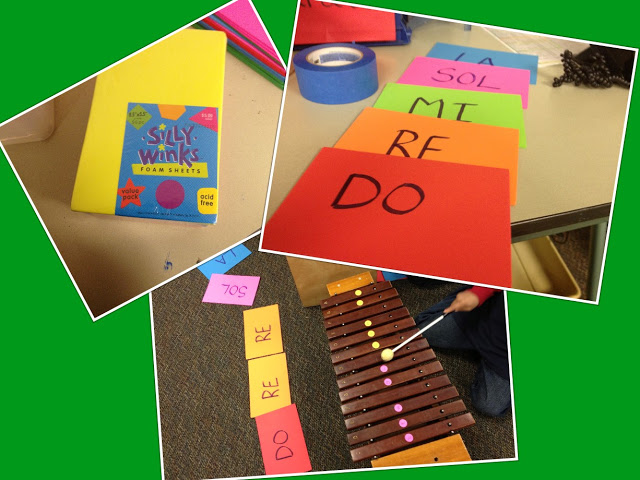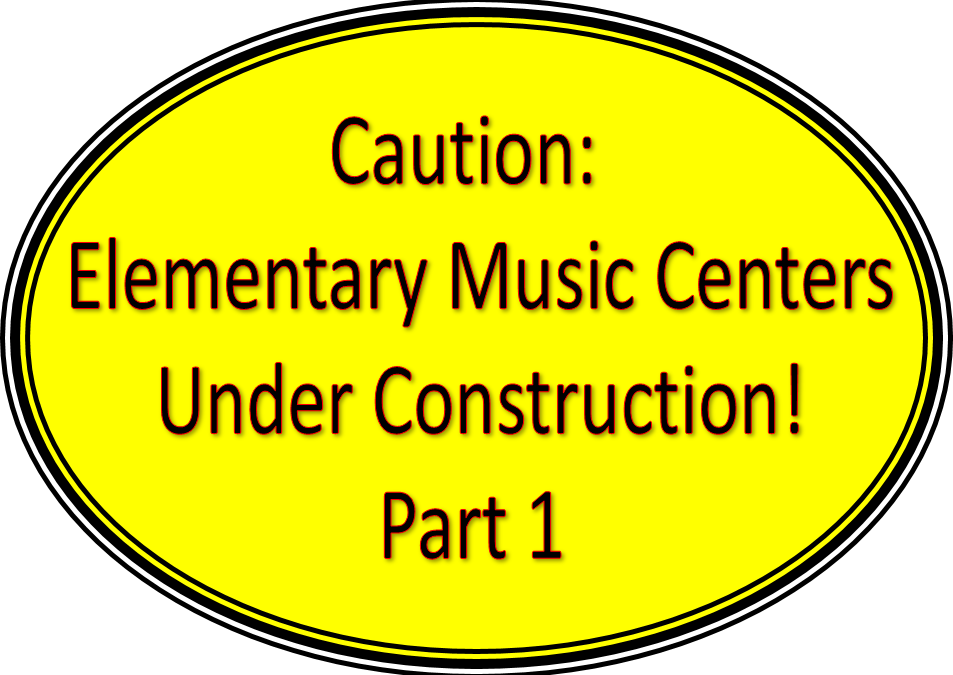Although I’m not ready to fully roll out centers for all of my classes, my schedule this week has allowed me the time to experiment some and try centers with a few individual classes in kinder, 1st and 2nd grade.
Today I’m going to share one of my centers and how I adjusted it to fit the needs of the 3 grade levels I’ve used it with so far.
 |
Kindergarten:
1. I prepared each xylophone to be played in C pentatonic.
2. Before opening this center, I had students help me model creating a pitch pattern in front of the xylophones. Then we modeled taking turns playing the xylophones. We modeled how to play the xylophones appropriately.
3. My kinder students were asked to take turns creating melodic patterns for their partners to play.
Outcomes:
Centers were made for kindergarten and kindergarten was made for centers. My little ones were so happy to have the chance to explore this center. With the VERY quick addition of some bright stickers that labeled the scale on the xylophone itself…..(I hadn’t thought of that until I had a class full of kids)….. they were off to the races. The very first thing they did was find the F and B bar and put them back on the xylophone, but even with them on, I noticed that they made a real effort to follow the melody created by their friend. Because there was no rhythm value on the cards, they took the time to hunt for and find the pitch on the instrument. However in kindergarten creating and playing a melodic pattern lasts about a minute and a half and then it’s time to improvise! My favorite part is that using a center like this with just one or two of the really “cool” instruments allowed my kindergarten students to hear what they were playing because the music room wasn’t cluttered with 10 other instruments playing together…. There were just two instruments and they had permission to play something new and self directed.
1st grade center:
1. Before opening this center, I had students help me model creating a pitch pattern in front of the xylophones. Then we modeled taking turns playing the xylophones. We modeled how to play the xylophones appropriately.
2. My first grade students were asked to take turns creating melodic patterns for their partners to play.
Outcomes:
1st grade were almost as excited about this center as kindergarten. I didn’t pre-set the xylophone into C pentatonic, since we have recently been playing as a class together, they automatically took off the bars. The biggest growth was in their ability to help each other get their patterns right. First graders read the cards out loud to each other while helping their partner to find the right bar. They were able to sustain the planned activity for a longer time before they started improvising. Their improvisation was more informed and conversational. They dialoged with their partner about what they should try next.
2nd grade
1. Before opening this center, I had students help me model creating a pitch pattern in front of the xylophones. Then we modeled taking turns playing the xylophones. We modeled how to play the xylophones appropriately.
2. My second grade students were asked to take turns creating melodic patterns for their partners to play.
3. I gave them the extra challenge singing what they play. I asked them to try and find the pattern for Rain Rain Go Away and to figure out how to play that song in addition to their composition.
Outcomes:
2nd grade was truly intrigued by the idea of composing. They took turns composing and conducting their patterns and really could have stayed at this center longer.

